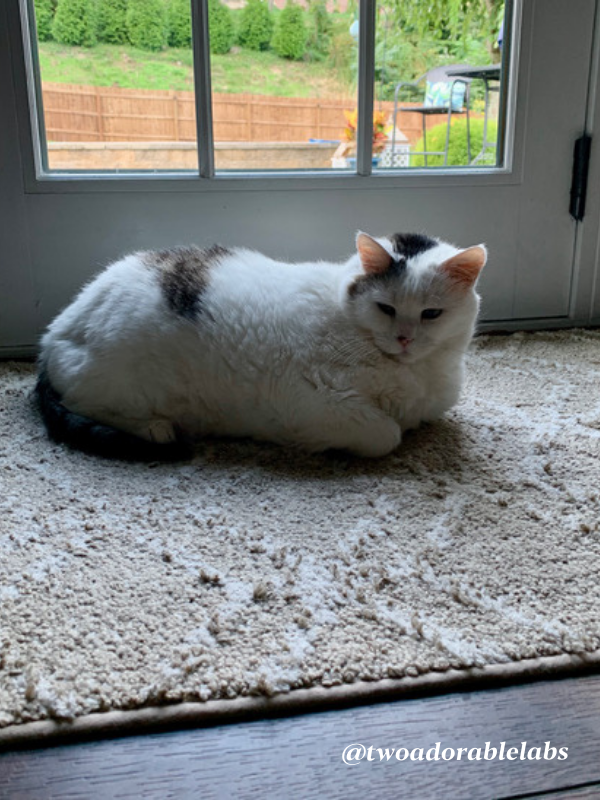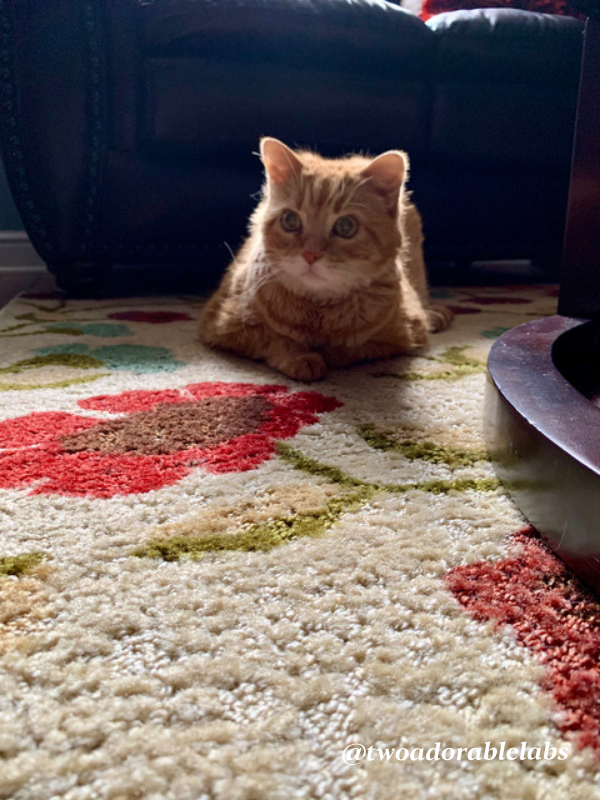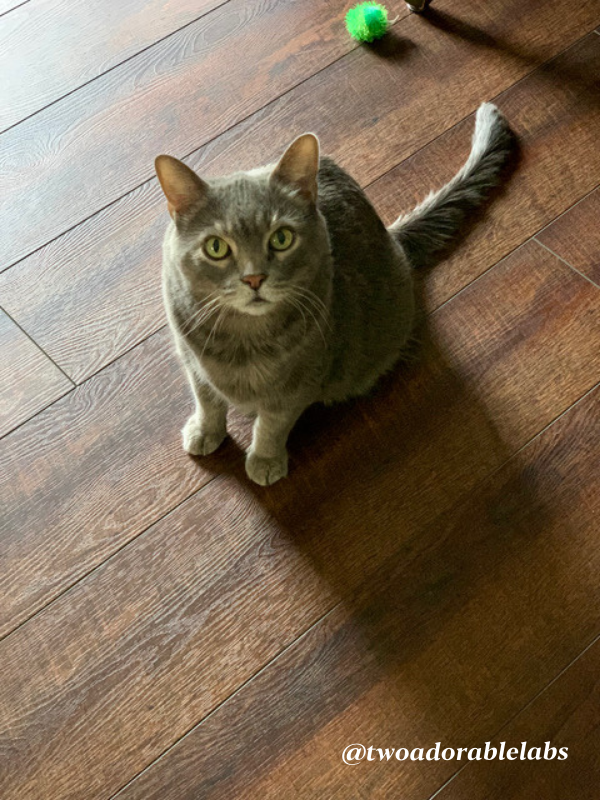What is Bobcat Fever In Cats?
Happy Wednesday everyone! Have you ever heard of Bobcat Fever In Cats? I was reading through a magazine and came upon an article about Bobcat Fever that I found very interesting. I have never heard of this before and wondered if any of you have? I thought I’d do some research and put together this blog to help make you aware of this deadly tick borne disease! If you keep your cat strictly indoors, you have nothing to worry about. But…if you allow your cat outside without flea/tick prevention, you might want to look into giving him some. Also, if you have dogs, they can carry ticks into the house that can easily crawl on to your other animals or your cat so it’s safe to say that flea/tick prevention and heart worm prevention is very important.
What Is Bobcat Fever?
Cytauxzoonosis (aka Bobcat Fever) is an acute, often fatal tickborne disease caused by the hematoprotozoan parasite Cytauxzoon felis. Bobcat Fever often strikes healthy, young adult cats who have access to or live outdoors.
Binky, Piggy, and Wilbur
I’ve talked about my sister’s cats before and I love how each picture is so different from each other. They all have different expressions on their faces and I think their eyes tell a story of how much they are loved. P.S. Binky is a bit sleepy in his picture below 🙂

What is Cytauxzoon felis?
Cytauxzoon felis may not be a well-known parasite, but it is often a deadly one. Found mainly in the Southeastern United States, this blood parasite is often commonly referred to as “Bobcat Fever” since bobcats are considered to be the natural hosts. Cytauxzoon felis is spread to bobcats and domestic cats by ticks. Cats become infected after being bitten by an infected Amblyomma americanum tick (also known as the Lone Star tick because of the single white mark visible on it).
According to the Companion Animal Council, the disease is most often observed “between March and September, when the tick vectors are active.”
Where is Cytauxzoon felis found?
The lone star tick, Amblyomma americanum, is considered to be the main vector of Cytauxzoon felis. The disease has been reported in domestic cats in the states of:
• Arkansas
• Florida
• Georgia
• Kansas
• Kentucky
• Illinois
• Louisiana
• Mississippi
• Missouri
• North Carolina
• Ohio
• Oklahoma
• South Carolina
• Tennessee
• Texas
• Virginia

Symptoms:
Cytauxzoonosis results in protozoal sepsis, characterized by systemic inflammatory response. Symptoms to look for are lethargy, lack of appetite, fever, anemia (pale gums), jaundice and difficulty breathing. Cats can become ill up to 15 days after a tick bite.
Infected cats will have a high fever (104-106°F) and may show signs of anemia (pale gums) and jaundice (yellow discoloration to the skin due to a build-up of bilirubin in the blood).
Treatment:
Ordinary antibiotics for common infections are not effective against Cytauxzoon felis, a protozoal organism. Standard therapy for cytauxzoonosis is a combination of an antimalarial drug (atovaquone) and antimicrobial medication (azithromycin) in addition to supportive care to provide hydration and electrolyte balance, oxygen supplementation and nutritional support. A 2013 study found that the combination of atovaquone and azithromycin resulted in a 60 percent survival rate. Cats included in this study were from various states across the South and southeastern United States, including Oklahoma. But OSU clinicians have observed that cats infected here with cytauxzoonosis have a lower survival rate, possibly due to a different strain that may be more severe or resistant to standard therapy. Current research is studying the potential differences between infections in different geographical regions.
Cytauxzoonosis is a seasonal infection, with most cats becoming infected between March and September. Usually there are two waves, with the first starting in March/April and ending in late June and the second wave between August and September. There may be annual variations in peak months based on rainfall and temperatures, as these variables may impact tick transmission.

I love hearing from all of you and do my best to respond to each and every one of you. I always enjoy your comments, feedback, and suggestions so keep them coming! If I’ve posted a recipe (for our human and our furry friends) and you try it, don’t forget to tag me on Instagram @twoadorablelabs and use #twoadorablelabs.

You Might Also Like
Pet Cloning: What Is It And How Does It Work?
Happy Wednesday, everyone! Pet Cloning…What is it, and how does it work? I recently found an article in Modern Dog Magazine, “Meet Mella, The Cloned Winery Dog,” about how a California winery spent $50,000 cloning their dog. Before reading the article, I had two...
What Spring Weather Will Reveal About Your Home
Happy Wednesday, everyone! What Spring Weather Will Reveal About Your Home. Spring weather can be quite the revealing element! After weathering the winter out, with all the cold, rain, and dryness it brings, blooming into spring will highlight everything wrong with...
How To Be The Kind Of Traveler Others Are Grateful For
Happy Wednesday, everyone! How To Be The Kind Of Traveler That Others Are Grateful For. I typically talk about animals and food, but after taking a quick trip to Tennessee last year, I thought this post was fitting. I have wonderful memories of my trip to Tennessee...
10 Reasons To Learn To Cook
Happy Wednesday, everyone! Do you love to cook? Here are 10 Reasons To Learn To Cook! As you know, I’ve written three cookbooks and am working on my 4th cookbook. I found my love for cooking and baking from my grandparents and parents. I’m lucky to have Mr. TAL,...
3 Simple Ways to Get Winter-Ready Without the Stress
3 Simple Ways to Get Winter-Ready Without the Stress...This brings me to ask...What is your favorite season? If you live in an area like I do that has all four seasons, it’s easier to choose, and I have to say that winter is my least favorite, with fall being my...
Dealing With The Death Of A Pet
Happy Wednesday, everyone. Today, we’re talking about the worst part of pet ownership: Dealing With The Death Of A Pet. There are two days of owning a pet that you can’t forget: The first day you bring them home, which is so exciting and the last day of their life...







I have never heard of that thanks for the info! And what beautiful precious pics of the cats ????????
You’re welcome! I also love those pictures!